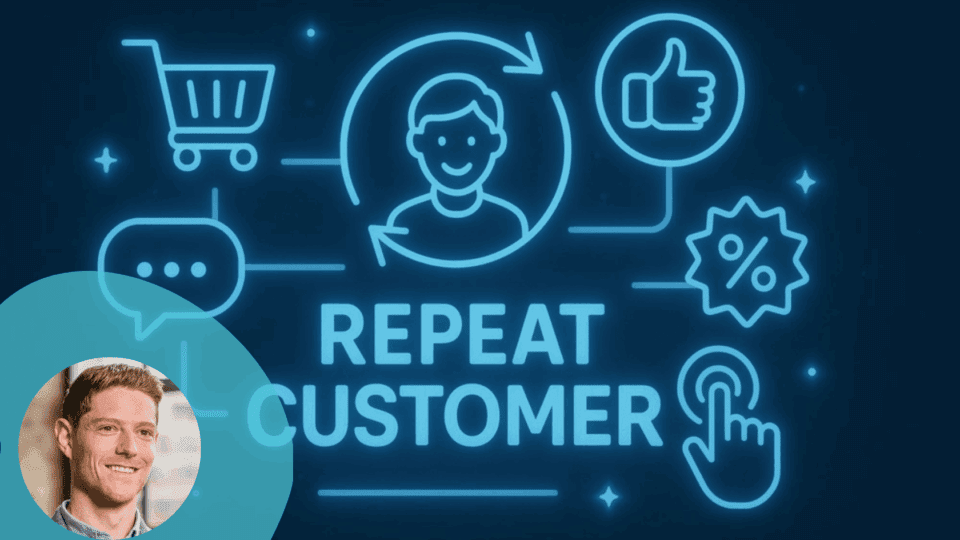The first purchase is cause for celebration, but it’s the second sale that really matters. That’s when a shopper starts to bring real opportunity for your brand to grow. It marks the moment when curiosity turns into commitment. For ecommerce brands navigating a competitive market, that second purchase is more than just another transaction — it’s the start of a relationship. And relationships are what helps brands thrive.
We found that after a customer makes their first purchase, there’s roughly a 30% chance they’ll make another. Not bad, but not a guarantee by any means. But once they do return and buy again, the likelihood of further purchases increases significantly. That second sale is the behavioral turning point — and smart brands are learning to optimize for it. This is particularly important as the cost of acquiring new customers continues to climb, which also means the pressure to retain and re-engage existing ones is growing.
The good news is that there are proven ways to boost the odds. One of the strongest levers is a loyalty program. Customers who are part of a loyalty program are 47% more likely to return for a second purchase compared to those who aren’t. That’s not a marginal gain — it’s a huge driver of revenue.
And it’s not just about returning either. Loyalty program members tend to spend more when they come back. Those who redeem points spend 2.5X more than non-members. That means programs aren’t just improving retention — they’re growing customer lifetime value too.
The Key to an Effective Loyalty Program
But not all loyalty strategies are created equal. The most effective ones are built around personalization and consistent engagement. And, crucially, they don’t wait until a customer disappears before making an attempt to bring them back.
The post-purchase window is a key moment to act. The thank you email, the follow-up suggestion, the invitation to review or refer — all of these can make a difference. In fact, post-purchase emails have been shown to increase revenue by as much as 30%. They’re often overlooked, but they shouldn’t be. This is the time when a shopper is most engaged and most receptive. It’s the best chance to strike up a deeper connection.
Glow Recipe’s viral products make retaining customers following that first shopping session essential. To encourage repeat purchases, new members receive a gift of coveted samples — claimable only on their second order.
Loyalty is Built, not Given
A lot of brands fall into the trap of thinking loyalty is something you reward. But in practice, loyalty is something you build, and brands that get it right know it can take time. It’s not about giving away discounts or freebies to anyone with an email address. It’s about showing that you understand what your customers value and giving them a reason to return.
Origin Coffee deepens emotional relationships with customers through sustainability-driven rewards and charitable donation options — because that’s what their customers care about. Others might focus on exclusive access (like the Amy Myers MD Insider Pass, which is responsible for almost half of that brand’s revenue), early product drops, personalized offers, or just making the experience feel seamless and appreciated. For example, 58% of Esmi Skin Minerals’ customer base is a member of their program — because it’s the best place to be.
And the great news is that these rewards don’t cost brands their margins; the focus on experiential rewards means they give customers what they value, without giving away too much for free.
Looking Beyond the Basics to Build Loyalty
As customer expectations continue to rise, the basics aren’t enough. People want to feel known and heard. They want to feel that their loyalty is worth something — or they will just go elsewhere, and then you’ll have a harder job of winning them back.
Indeed, our new research shows that if you don’t have a great loyalty program, chances are your competitors do. The days of generic campaigns and one-size-fits-all incentives are numbered. The future of loyalty is smart, subtle and integrated into the customer journey in a way that feels natural rather than forced.
This is where ecommerce brands — from indie shops to global retailers — need to focus. Not on flooding inboxes or chasing conversions at any cost, but on creating a rhythm of communication and care that brings people back. That means using the data you have to craft better touch points. Understanding who your onetime buyers are, what brought them in, what they responded to and what might tempt them again.
It also means being proactive. Waiting three months to chase a second purchase is too late. The opportunity is in the days and weeks immediately following that first sale. We know that consumers have a short attention span, so you’ve got to get in there fast. It’s when customers are most likely to still remember how they felt opening your package or browsing your site. That’s when loyalty takes root — so it’s the best time to prompt them to enroll in your program. Even if they’ve completed their first order by then, you can always backdate points, a gesture that makes them feel special from the start.
Retention is a Year-Round Game
Retail margins are tight, and every repeat customer is more valuable than ever. The brands winning in this climate are those that understand retention isn’t something you think about once a year when planning your CRM calendar. It’s a daily discipline, and mastering the second purchase to lock in loyalty is the cornerstone of that strategy.
So rather than celebrating that first conversion and moving on, take a moment to think about what comes next. Is the experience compelling enough to make someone return? Is there a clear, enticing reason for them to re-engage? Are you rewarding loyalty in a way that feels meaningful, not just transactional?
Because in the end, the second sale isn’t just another order. It’s a signal. A sign that someone has seen enough to come back. And when they do, it opens the door to a longer-term relationship — one where value flows both ways.
Charlie Casey is the CEO and Co-founder of LoyaltyLion, a top-rated global loyalty platform. Thousands of Shopify brands use LoyaltyLion to accelerate growth by turning more one-time shoppers into returning customers. Prior to founding LoyaltyLion, Casey joined the Foreign and Commonwealth Office as an Economics Advisor before becoming a consultant at Deloitte.




